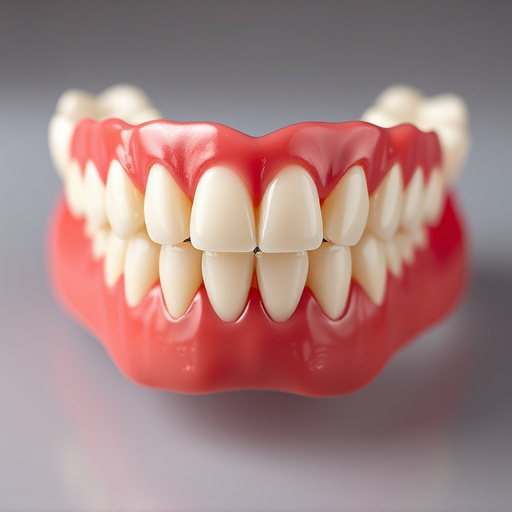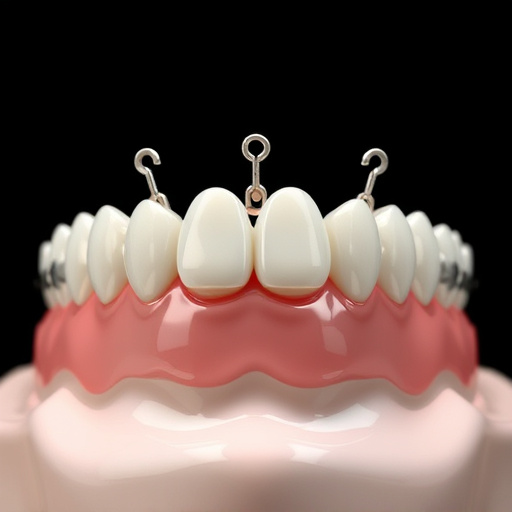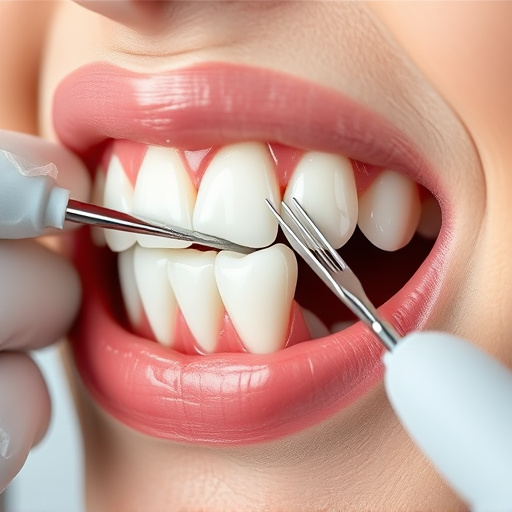Pain perception in oral surgery procedures varies greatly among patients, influenced by individual sensitivity and past experiences. Modern dentistry uses techniques like clear aligners for minimal invasiveness and advanced anesthetics for complex procedures. Effective communication between patients and healthcare professionals is crucial for managing pain expectations. Common procedures include extractions and dental implants, while less invasive options focus on patient comfort during and after treatment. Preventive dentistry practices aim to avoid extensive surgeries. Modern pain management techniques offer significant relief for post-operative discomfort.
Are you considering oral surgery? One of the most common concerns patients have is the level of pain associated with these procedures. Understanding your pain perception and what to expect is crucial for a positive surgical experience. This article delves into the comfort levels associated with various oral surgery procedures, offers insights on managing post-surgery discomfort, and highlights effective pain relief options. By understanding these aspects, you can navigate your journey towards optimal oral health with confidence.
- Understanding Pain Perception: What Patients Should Know
- Common Oral Surgery Procedures and Their Comfort Levels
- Managing Discomfort: Effective Pain Relief Options Post-Surgery
Understanding Pain Perception: What Patients Should Know

Understanding Pain Perception: What Patients Should Know
The perception of pain varies greatly from person to person when it comes to oral surgery procedures. Factors like individual sensitivity, anxiety levels, and previous experiences significantly influence how one might experience post-operative discomfort. While some patients may describe their recovery as comfortable, others could find the process quite challenging. It’s crucial to set expectations based on these variables. Modern techniques in children’s dentistry often employ clear aligners, aiming for minimal invasiveness with reduced pain. For more complex procedures like dental implants, anesthetics and advanced healing strategies have made the process much more manageable, transforming what was once a daunting experience into a relatively comfortable one.
Patients should remember that oral surgery is a specialized field, and healthcare professionals are equipped to guide them through each step of their treatment journey. Open communication about pain levels ensures that any concerns can be promptly addressed. Additionally, understanding the differences between acute pain (short-term) and chronic pain (long-lasting) helps in managing expectations and seeking appropriate care after oral surgery procedures.
Common Oral Surgery Procedures and Their Comfort Levels

Oral surgery procedures range from simple extractions to complex reconstructive surgeries. One of the most common and relatively comfortable procedures is tooth extraction, which can be performed under local anesthesia to minimize discomfort. Dental implants, a more advanced procedure, involve replacing missing teeth roots with surgical inserts, offering a long-term solution that feels natural and comfortable.
Cosmetic dentistry procedures like teeth whitening or veneers might not be as invasive but still require precise techniques to ensure patient comfort. Preventive dentistry plays a crucial role in maintaining oral health, focusing on regular check-ups and cleanings to avoid more painful and extensive surgeries. The level of comfort during and after these procedures varies based on the individual’s tolerance, the complexity of the surgery, and the use of anesthesia, but many modern techniques are designed to make these treatments as comfortable as possible for patients.
Managing Discomfort: Effective Pain Relief Options Post-Surgery

Many patients worry about post-operative discomfort after an oral surgery procedure. However, modern pain management techniques have made it possible to achieve significant relief and ensure a more comfortable recovery. Effective pain relievers, including prescription medications and over-the-counter options, can manage pain levels effectively, allowing individuals to recover without excessive discomfort.
In addition to pharmaceutical interventions, dentists often recommend specific at-home care practices. This includes keeping the surgical site clean through gentle rinses, applying ice packs to reduce swelling, and adopting soft or liquid diets as advised by the dentist. For children’s dentistry procedures, parents can use age-appropriate methods to manage their child’s discomfort while ensuring proper healing, often involving a combination of medication and soothing measures. Unlike general dentistry procedures like dental cleanings, oral surgeries demand more specialized attention to alleviate pain, making it crucial to follow post-op instructions diligently.
While oral surgery procedures may evoke concerns about pain, modern techniques and advanced anesthesia options make many common surgeries more comfortable than ever. Understanding your unique pain perception and exploring effective pain management strategies post-surgery can ensure a smoother experience. By staying informed and working closely with your dentist or oral surgeon, you can navigate the process with confidence, knowing that discomfort is manageable and often brief.














